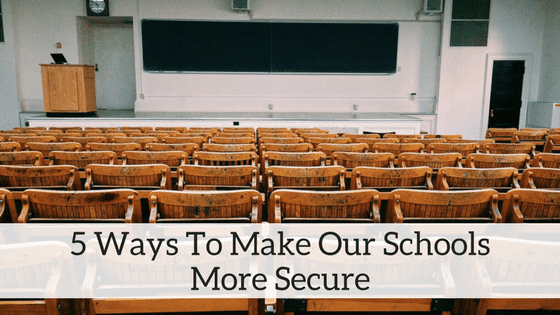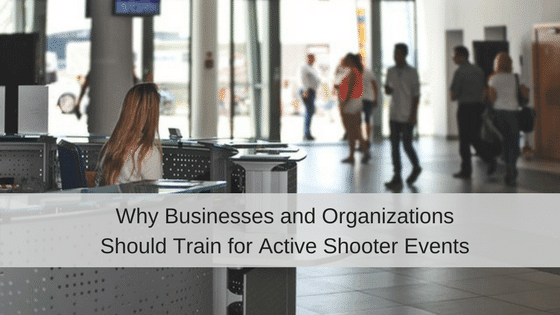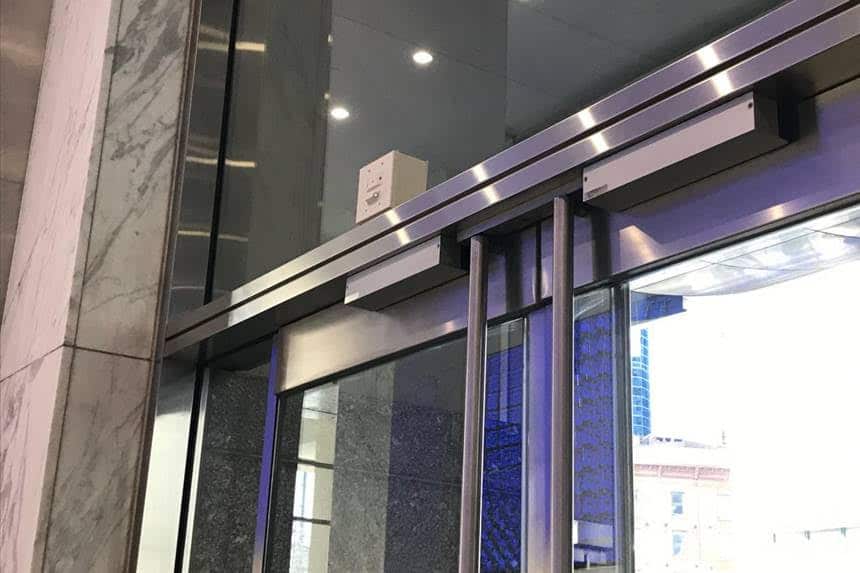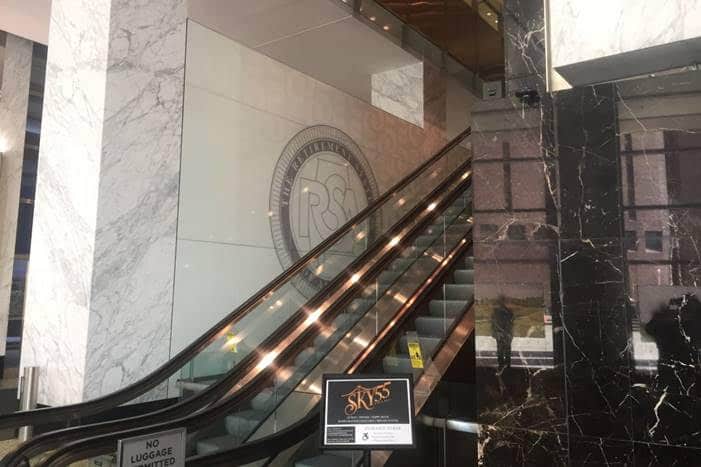5 Ways to Make Our Schools More Secure

There is quite a bit of focus these days on the fact that corporations, churches, businesses and other organizations need to focus more time and resources on preparing for a critical incident such as an active shooter. I couldn’t agree more as I am very passionate about this fact. However, the single most critical organization that needs to focus A LOT of time and energy into critical incident and active shooter preparation is our schools. Whether it is a crazed gunman, an extremist terrorist, or the lunatic ex-spouse of a staff member, the threats to our schools are real and are not going away.
It was in April of this year when the ex-husband of Karen Brown, a special education teacher in San Bernardino, entered her classroom and gunned her down while she was teaching. He also struck two students in the process, killing one, before turning the gun on himself. In the Sandy Hook Elementary massacre, the shooter wandered the school executing victims for 11 minutes before being encountered by the police and taking his own life. All of his victims were shot between 3 and 11 times EACH. These are two starkly different incidents with very different shooters behind the gun. Their motives and intended targets in both incidents were vastly different yet the result was still the same. Innocent lives were taken by crazed gunmen on school grounds and the existing security policies and measures failed.
Outside of the existing potential threats previously mentioned, our schools have to begin considering that they qualify as both a soft target and a high value target to terrorist organizations. Both terrorists and active shooters alike seek maximum carnage with minimum resistance and our schools would traditionally provide both to these deranged individuals. Although police response times to active shooter events have improved greatly, it could still be the most important three minutes of your life.
HERE ARE FIVE CRUCIAL THINGS EVERY SCHOOL SHOULD BE DOING TO IMPROVE THEIR SECURITY.
Consistently secure all buildings. This may seem simple and elementary but it can be a game changer. One door left unlocked and unattended could make a life a death difference. In the Columbine High School shooting, not a single locked door was breached by the shooters. In the San Bernardino incident, the gunman attempted to enter a side door where he would go unnoticed but it was locked and he was forced to enter the main entrance. Although their security policy still failed, the incident could have been much worse had he entered undetected. Even on the most beautiful of days, keep all classroom and building doors secured and locked. You are sending a message to anyone seeking to infiltrate your campus.
Conduct regular and visible patrols. This task should be shared by staff and faculty so that everyone participates in proactively creating a secure environment. Furthermore, the more personnel involved, the better. This also sends a message to any potential intruders that you have multiple people involved in securing your campus and that they will meet resistance. If ANY unknown or suspicious person is identified on campus or in a building, then you MUST confront them. Confront them IMMEDIATELY and ASSERTIVELY and preferably in pairs if the personnel is available. When any criminal is seeking a victim, they are looking for just that, a victim. Being assertive and not avoiding the situation communicates clearly that your campus is not a soft target.
Get a threat assessment and security evaluation done for your particular campus. Every school building and campus is different and will have different strengths and weaknesses when it comes to achieving physical security. There are also several ways to advantageously exploit certain features of particular buildings and construction materials during a critical incident. Hiring a professional to evaluate your facility can make all the difference when it comes to critical incidents.
Have a plan. This also sounds elementary and obvious but I have been astounded at the number of school personnel I have spoken with that don’t have a real plan. Unfortunately today our schools face multiple threats from both nature and man and having specific plans for those events and your particular campus are extremely important.
Waiting for the School Resource Officer to handle the situation is NOT a plan. Although SROs are an outstanding resource for schools, they cannot be everywhere all of the time. Even if your campus is small and it only takes one minute for the SRO to get anywhere on campus, one minute is an eternity during an active shooter event. Every school, campus, and faculty composition is different so having a customized plan creates an outstanding advantage when seconds count.
Practice and train frequently. When in danger, the human brain goes directly into survival mode. We cannot reason, our only instinct is to survive. When we do this, we have one of three reactions, fight, flight or freeze. These are primitive instincts that have kept our species alive for thousands of years, but they are just that: primitive. Our survival instincts can be programmed to change the way we respond under critical stress levels. The ONLY way to do this is through training and repetition. During any critical incident most people will have some sort of reaction, but prior training allows you to RESPOND.
To learn more about obtaining a security evaluation, training for a critical incident, or strengthening the security of your school or campus, please visit our website at www.defendsystems.com or give us a call at 615-236-6484.



